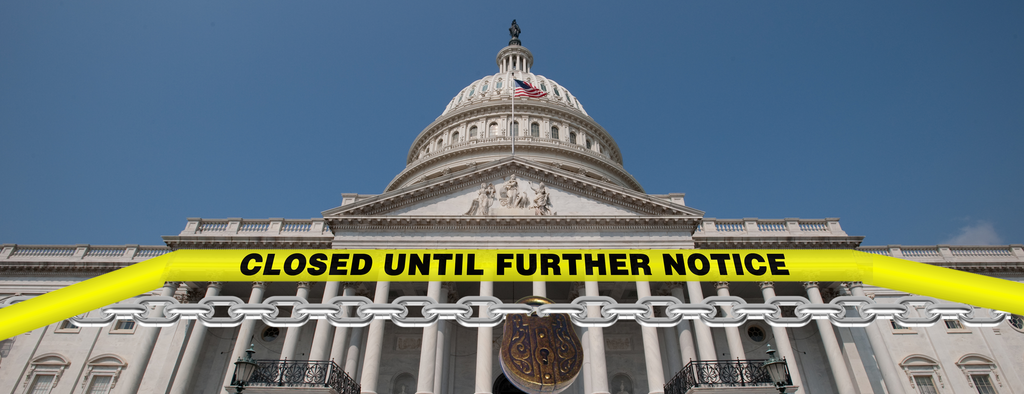Maryland's Teacher Shortage: Will the Blueprint's Plan for Better Pay, Training Do Enough?

Fifth-grade teacher Melissa Carpenter works a 10-hour day on average during the week, and her job sometimes requires her to put in hours on weekends, too.
“I feel like teaching is one of those jobs where we go to work to do more work — to do work after work,” said Carpenter, who teaches at William B. Wade Elementary School in Waldorf, in Charles County.
Carpenter’s long hours are far from unique among Maryland’s educators, as the state and nation grapple with a teacher shortage.
The U.S. Department of Education keeps a Teacher Shortage Areas database — and it found that for the current school year, Maryland was short of teachers in 28 subjects, which the state defines as “areas of certification.” That’s up from 17 five years earlier. Some teacher certification areas — such as English as a second language, health science and special education — are short on teachers from pre-K through the 12th grade.
The Blueprint for Maryland’s Future – a landmark state law reforming public education — aims to fix that problem by “elevating the stature of the teaching profession” through higher pay, better training and stronger recruitment efforts.
However, experts and educators have mixed views about whether that will successfully address the root causes of the shortage.
“Money is a huge help, but it's not everything,” said Simon Birenbaum, director of grading, assessment and scheduling at Baltimore City Public Schools. “Human capital is the biggest issue, and money can help with that problem, but recruiting, training and retaining high-quality teachers and staff has to be the primary focus. No amount of money can compensate for a lack of highly-skilled educators.”
Documenting the shortage
Maryland’s teacher woes follow national trends. The National Center for Education Statistics reported 86% of U.S. K-12 public schools faced challenges in hiring teachers for the current school year.
Amid the shortage, the Blueprint calls for hiring an unspecified number of additional teachers to ease the workload of classroom veterans.
“You hear a lot about the teacher shortage — and how are we going to implement all these Blueprint programs, which require additional staffing, when we have a teacher shortage?” asked Addie Kaufman, executive director of the Maryland Association of Secondary School Principals.
Shortages stem, in part, from the fact that teachers are leaving the profession. In Prince George’s County, 1,126 teachers resigned between July 2022 and July 2023 — up from 989 the previous year, The Washington Post reported. Meanwhile, 625 resigned in Montgomery County Public Schools, up from 576 a year earlier.
Dorchester County experienced the highest attrition rate in Maryland during the 2021-22 school year at 18%, according to a Department of Education report.
“I used to never have people just quit in the middle of the year,” said Dorchester County Superintendent Dave Bromwell, who recently retired. “The pandemic told some people, you know what? If you're not happy, move on.”
All those factors end up impacting teachers like Carpenter. She said her grade level saw an influx of students, with around 30 students in her own fifth grade class this year.
“Our class sizes are growing, and we don't have the support in place to help some of our struggling learners,” she said.
‘Teaching isn’t approved’
Schools are suffering from a long-term decline in the number of people interested in becoming teachers.
That decline has been ongoing since the mid-‘70s, “but it gets worse and worse and worse, year over year,” said Mike Hansen, an education policy expert at the Brookings Institution.
According to the State Department of Education, 9,134 people were enrolled in teacher preparation programs in the state in 2012. That number plummeted by about half by 2017, but rose to 6,037 by 2020.
Why is teaching becoming less appealing as a career? Zid Mancenido, a lecturer at the Harvard Graduate School of Education, has been studying that issue.
“One of the major findings of my research has been that people are taught over time that teaching isn’t a great career,” he said in a 2022 interview on the school’s website. “There are all these tiny interactions they have over their lifetime that give them this feeling that teaching isn’t approved, that they should be aspiring to other careers that might be more prestigious or well-paid.”
Amid the shortage, many schools hire less-credentialed “conditional” teachers — those who have not yet received their professional certifications. Maryland’s issuance of conditional certificates more than doubled between 2018 to 2022, a state Department of Education report said.

In Charles County, where Carpenter works, 12.4% of all teachers held conditional certificates by 2021 – a rate only surpassed by Baltimore City (13.4%) and Prince George’s County (14.3%).
Carpenter said experienced teachers are leaned on to help the conditional hires.
“Which would be fine if you had one or two teachers who needed that support. But we have a massive amount of teachers who are conditional right now,” she said.
The Blueprint’s pay bump
In order to address the teacher shortage, the Blueprint provides a number of measures that lawmakers hope will encourage people to become teachers and ensure that existing ones don’t leave for more lucrative out-of-state positions – or exit the profession altogether.
A key Blueprint initiative increases teacher pay to a minimum of $60,000 by 2026. In some counties, that means a nearly $15,000 pay bump for new teachers.
David Larner, chief human resource and professional development officer at the Howard County Public School System, said the pay raise will attract teachers from other states and build up Maryland’s teacher workforce.
“If our salaries are higher than salaries in surrounding states … then candidates are more likely to come,” Larner explained.
However, Hansen, of the Brookings Institution, expressed skepticism about the likely impact of the measure on the state’s teacher shortage.
Hansen argued that rather than a universal rise in minimum salary levels, money should be targeted where it’s needed the most – attracting teacher talent in high-need schools and specialized fields like STEM subjects and special education. He also highlighted research that suggests salary is just one of many factors that can lead to teacher attrition.
“I think we need to be paying teachers more – I don’t think paying a $60,000 minimum wage is the way to do it,” he said.
Boosting careers and diversity
The Blueprint also aims to improve teacher quality by encouraging educators to obtain additional training.
The plan provides for a salary increase of $10,000 for teachers who become National Board Certified, an advanced teaching credential that fewer than 6% of Maryland teachers held at the start of 2023, according to the National Board for Professional Teaching Standards. Teachers in high-need areas may see their annual salaries increase by up to $17,000 by becoming certified.
“We want to professionalize the career of teaching, and I think that is absolutely what we should be doing,” said Stephanie Novak Pappas, principal of the Holabird Academy, an elementary and middle school in Baltimore.
However, Hansen questioned the Blueprint’s emphasis on National Board certification.
“We don’t have a lot of evidence that actually getting your NBC makes you a better teacher,” Hansen said.
The Blueprint also calls on school districts to create a diverse workforce. The Accountability and Implementation Board – which oversees the Blueprint – will evaluate those efforts.
A diverse workforce has significant benefits, according to David Blazar, an education policy expert at the University of Maryland.
Blazar said that increasing the share of Black teachers has “exceptionally large impacts on students’ short and long term outcomes,” he said. “I’d say some of the largest impacts I’ve seen across all of the educational intervention literature.”
But maximizing the benefits of a more diverse workforce will be complicated, Blazar said. Even if the state’s teacher workforce came to match the demographics of its students, there would likely still be “clustering of Black teachers within certain districts, and within certain schools within districts,” he said.
Hansen echoed those concerns, and said that teachers nationwide remain even more racially segregated than students. Rather than aiming to make the teachers within individual districts reflect the exact racial demographics as their students, he suggested that policymakers should “maximize exposure and access to a diverse set of teachers for every student” across different regions.
A work in progress
Beyond the Blueprint, the General Assembly last year passed the Maryland Educator Shortage Reduction Act, which requires the state to set recruitment goals for teacher education programs, creates an alternative teacher prep program for early childhood educators and establishes a $20,000 yearly stipend for eligible student teachers.
Gov. Wes Moore, who proposed the legislation, said upon signing it that it is intended to place “world class teachers in every classroom.”
Carpenter, the Charles County teacher, said future changes may be necessary, too.
“We will have new students next year, and they will [have] different needs. So we need to make sure that we are constantly evolving,” she said.
Meanwhile, Sparkle Jefferson, an assistant principal at Flintstone Elementary School in Prince George’s County, stressed that reinforcing the teacher workforce is key to the Blueprint’s overall success.
“It lands in the hands of our educators, and if we don't have educators who are highly qualified or able to do the work, then the Blueprint work would never get accomplished,” she said.
Local News Network Director Jerry Zremski contributed to this report.
Capital News Service is a student-powered news organization run by the University of Maryland Philip Merrill College of Journalism. For 26 years, they have provided deeply reported, award-winning coverage of issues of import to Marylanders.
Common Sense for the Eastern Shore







